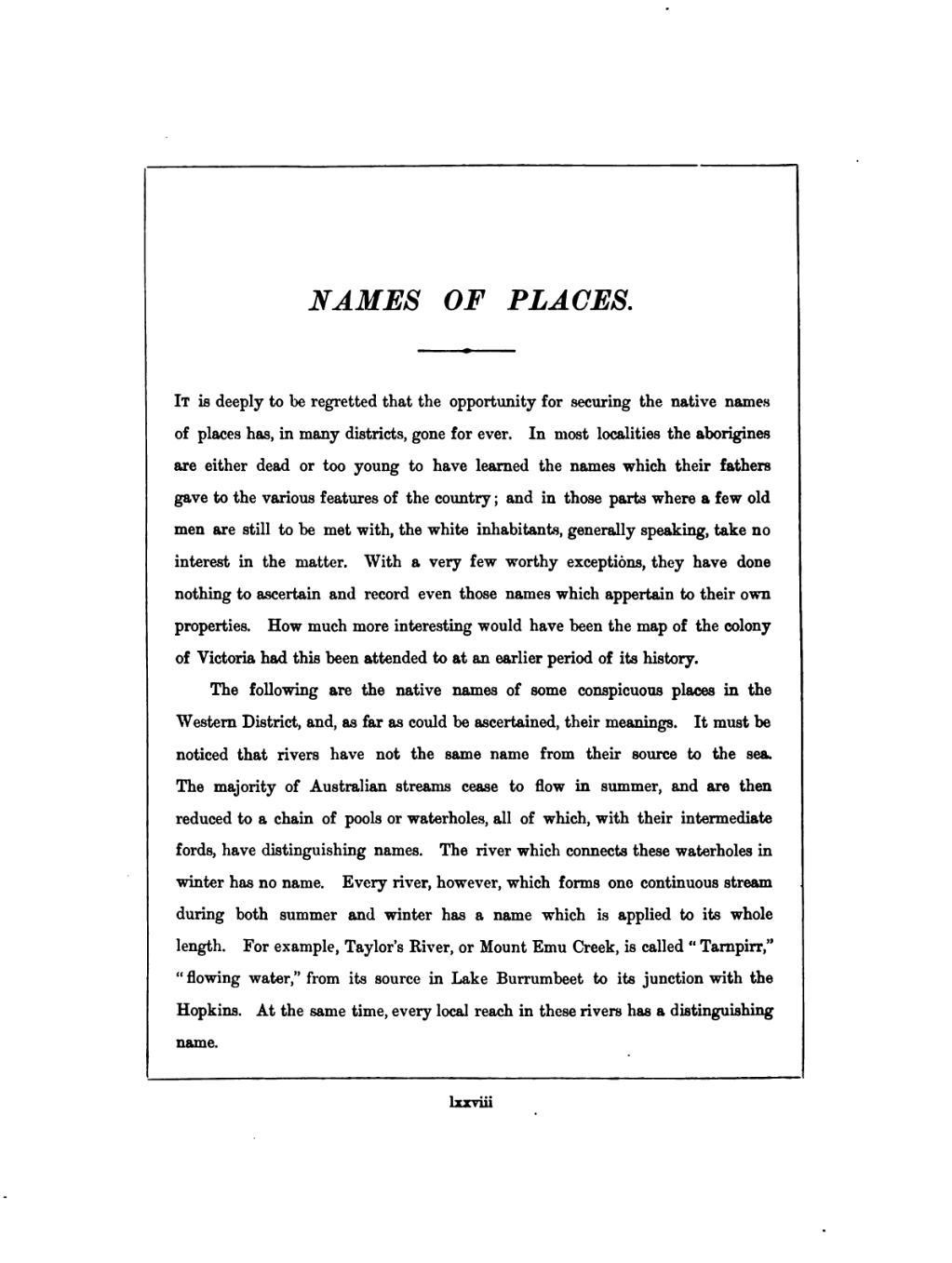NAMES OF PLACES.
It is deeply to be regretted that the opportunity for securing the native names of places has, in many districts, gone for ever. In most localities the aborigines are either dead or too young to have learned the names which their fathers gave to the various features of the country; and in those parts where a few old men are still to be met with, the white inhabitants, generally speaking, take no interest in the matter. With a very few worthy exceptions, they have done nothing to ascertain and record even those names which appertain to their own properties. How much more interesting would have been the map of the colony of Victoria had this been attended to at an earlier period of its history.
The following are the native names of some conspicuous places in the Western District, and, as far as could be ascertained, their meanings. It must be noticed that rivers have not the same name from their source to the sea. The majority of Australian streams cease to flow in summer, and are then reduced to a chain of pools or waterholes, all of which, with their intermediate fords, have distinguishing names. The river which connects these waterholes in winter has no name. Every river, however, which forms one continuous stream during both summer and winter has a name which is applied to its whole length. For example, Taylor's River, or Mount Emu Creek, is called "Tarnpirr," "flowing water," from its source in Lake Burrumbeet to its junction with the Hopkins. At the same time, every local reach in these rivers has a distinguishing name.
lxxviii
